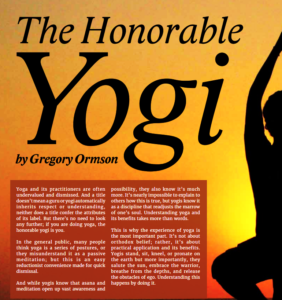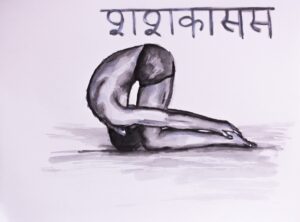“Wowing”
It’s what a listener in Vermont wrote. Yoga Song, the audiobook, is not just speech, not just chant, not just song, but an integrated presentation of yoga as a healing force-factor multiplier for body, mind, and spirit. Click below to hear Yoga Song, an instrument of mass inspiration.
Skip ahead to 4:37 for the words quoted below and my original music piece: “Ruah, Pneuma, Prana.”
From Chapter 3 OM “We do yoga with attention. We live yoga by the counsel of its ethics, and we embody yoga in the depths of our nature.
We follow its counsel to move in firmness and ease while remaining present in each moment’s experience. There, in the great quieting and stilling of mind and body, we come face to face with a golden child.
In the chant of OM, we step away from distractions to find a livable balance between the business of the world in which we engage and the song of yoga and its compelling melody taking us home to contentment.” The directions are clear . . .
Finally, at the end of each practice, our body chants the sonorous Om of creation’s note, the unstruck sound of the heart, the meditative point of deep consciousness, a luminous internal state.
This is yoga’s song arising and trembling from the body electric. It’s a song lodged in primordial consciousness signifying that we are part of the universal Om of creation. OM, the well-trod path providing yogis with something the broken world cannot. The deep abiding peace of coming home.”… read more...





















 Thank you, and please tell your friends about Yoga Song as a LANTERN Audiobook available NOW at $8.99 through Lantern as your 2 hour and 32 minute inspirational yoga companion in music and narration.
Thank you, and please tell your friends about Yoga Song as a LANTERN Audiobook available NOW at $8.99 through Lantern as your 2 hour and 32 minute inspirational yoga companion in music and narration.
 I’m happy to announce the impending release of YOGA SONG as an audiobook available on LANTERN Audio Audiobooks, Audible, and these distribution networks: Kindle, Apple Books, Bookbeat, Audiobooks.com, Audiobooksnow.com, Downpour.com, Findaway, Google Play, Biblioteha LLC, Baker & Taylor, Follett Libray Services and 10 others, Hoopla, Kindle, Macklin Educational Resources, Overdrive, Kobo, Libro.FM, Nook Audio, Scribd, Odilo
I’m happy to announce the impending release of YOGA SONG as an audiobook available on LANTERN Audio Audiobooks, Audible, and these distribution networks: Kindle, Apple Books, Bookbeat, Audiobooks.com, Audiobooksnow.com, Downpour.com, Findaway, Google Play, Biblioteha LLC, Baker & Taylor, Follett Libray Services and 10 others, Hoopla, Kindle, Macklin Educational Resources, Overdrive, Kobo, Libro.FM, Nook Audio, Scribd, Odilo
































